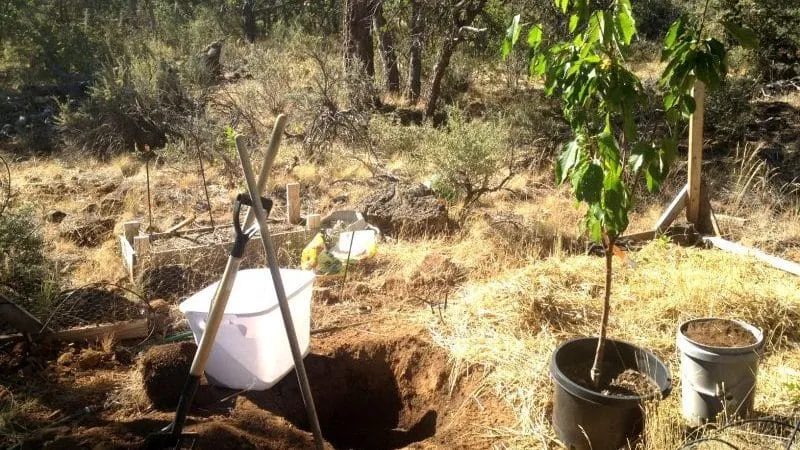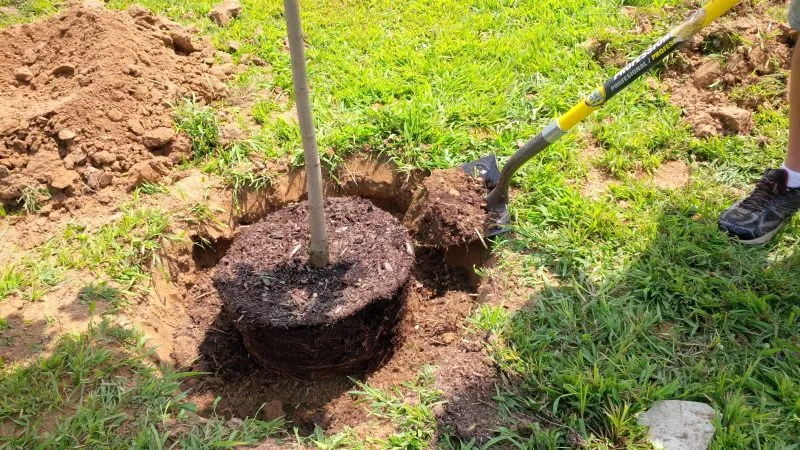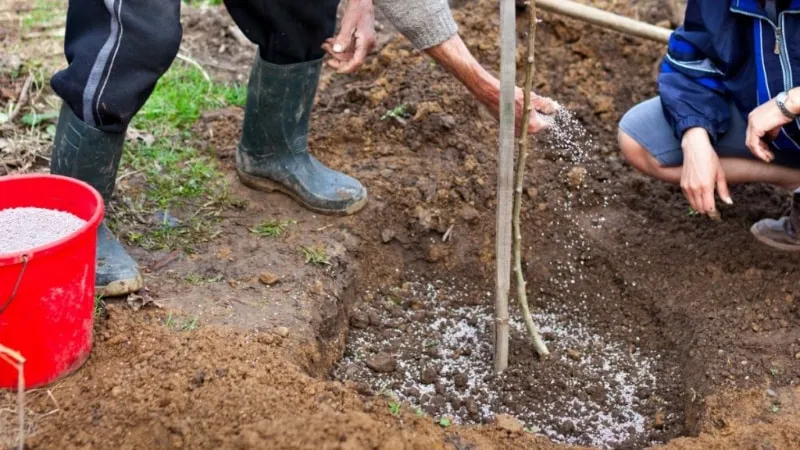Cherry trees are a common sight in many garden plots. However, not all beginner gardeners know the best time of year to plant this fruit tree.
Let’s explore when and how to plant a cherry tree correctly and what to pay attention to so that it takes root and eventually yields a good harvest.
Table of contents
Choosing a Cherry Variety for Autumn Planting
If you want to plant cherry saplings in autumn, opt for frost-resistant varieties to ensure they survive winter and establish roots by spring:
- Early Stella;
- Snowstorm;
- University;
- Maxima;
- Chocolate Drop.
These varieties tolerate cold winters and cool summers well.
Also, consider pollination requirements. Many cherry varieties are self-sterile and need a pollinator partner. Choose varieties with similar flowering times. For optimal fruiting, select 3-4 saplings of different varieties.
Selecting and Preparing Saplings

For autumn planting, choose saplings that have already entered dormancy—meaning they should be leafless and without young shoots. This ensures the plant focuses its energy on root development.
The root system should be well-developed, reaching at least 25 cm in length.
One- or two-year-old trees are ideal for autumn planting. The sapling’s height should not exceed 100 cm, and the bark should be brown.
Note! If the sapling is taller than 100 cm or the bark has a greenish tint, the plant has been overfed with nitrogen. This promotes excessive vegetative growth and reduces winter hardiness.
Choosing the Right Location
Mature cherry trees do not transplant well, so select a suitable spot carefully. Choose a well-lit, elevated area protected from wind and drafts. Avoid planting near larger trees that could shade the cherry.
Cherries are sensitive to waterlogging, so avoid swampy areas or locations with high groundwater levels.
Tip. With proper care, a cherry tree can thrive in one spot for 15-20 years and produce abundant fruit.
Cherries prefer sandy loam or loamy soils with neutral acidity. If the soil is too acidic, lime it beforehand (400 g of lime per 1 m²), but not in the same year as planting.
Planting Time
Plant cherry trees from mid-September to late October. Ensure planting is completed 20-30 days before the first frost to allow roots to establish. Base your timing on historical average temperatures for your region.
The ideal planting temperature is +10…+15°C during the day and not below 0°C at night.
Warning! If temperatures are too high, the plant will not enter dormancy. Energy will go into shoot growth rather than root development, leaving the root system unprepared for winter.
Autumn vs. Spring Planting
Planting cherries in autumn has several advantages over spring planting:
- Saplings adapt quickly to transplanting in autumn. They are already dormant, directing energy toward root growth rather than foliage.
- Better survival rates. Autumn provides stable temperatures without extreme fluctuations.
- Wider selection of saplings. Nurseries often sell cherry saplings at lower prices in autumn, with more variety available. Additionally, autumn saplings are sold with exposed roots, allowing for thorough inspection.
- Time-saving. Aside from planting and winter protection, no additional work is needed. Seasonal rains provide sufficient moisture.
However, autumn planting has drawbacks:
- Early frosts can damage roots before they establish, killing the sapling.
- Rodents may harm young trees. Protect saplings with tree guards or repellent paint.
How to Plant a Cherry Tree in Autumn

When planting in autumn, remember that roots must strengthen before frost. Follow these steps for success.
Required Materials and Tools
Prepare the soil mix for the planting hole in advance. You’ll need:
- Topsoil from the dug hole;
- 1 bucket of compost;
- 1 bucket of peat;
- 50 g of superphosphate.
Avoid nitrogen fertilisers at planting time—they reduce sapling survival rates.
Tools required:
- Support stake;
- Pruning shears;
- Twine;
- Rubber tree guard;
- Watering can;
- Shovel.
Step-by-Step Instructions
Follow these steps for successful cherry tree growth:
- Soak the sapling in water for 24 hours before planting to hydrate the roots.
- Inspect the roots and trim damaged sections with pruning shears.
- Pre-water the planting hole and let the water absorb.
- Place the sapling in the hole, backfill with soil, and firm gently.
- Insert a support stake on the north side and tie the sapling with elastic twine in a figure-eight loop. Use a rubber guard to prevent bark damage from rubbing.
- Water thoroughly (about 10 litres) and mulch the base with wood chips or pine needles to retain moisture.
Post-Planting Care

Young cherry trees need regular watering and pest protection. Water with at least 5 litres if rainfall is scarce. Create a watering basin around the trunk, but fill it in before winter to prevent waterlogging from melting snow.
Before frost, mound soil 30 cm high around the trunk and cover with spruce branches to insulate roots.
In low-snow winters, pile snow around the base to protect roots.
In spring, remove protective coverings and level the soil. Prune branches by one-third to balance root and shoot growth.
Apply preventive treatments against bacterial and fungal infections. For pests, use European-approved bio-insecticides like Spinosad or Neem oil. Eliminate larvae in bark and soil before fruiting to safeguard the harvest.
Water generously after flowering, during fruit development, and in early autumn (40-60 litres per 1 m²). Apply compost every three years (0.5 bucket per 1 m²).
For weak growth, feed with organic fertiliser: 1 bucket manure, 5 buckets water, and 1 kg ash. Use 0.5 bucket per sapling.
Regional Considerations
Planting times vary across Europe due to climate differences.
In Scandinavia and the Baltics, plant in early September to allow root establishment before early frosts.
In Central Europe (e.g., Germany, France), late September to early October is ideal.
In Southern Europe (e.g., Spain, Italy), planting can extend from October to mid-November.
In very cold climates, delay planting until spring.
Conclusion
Planting a cherry tree in autumn is straightforward, even for beginners. The key is selecting healthy saplings, choosing the right location, timing planting correctly, and following proper care techniques.







